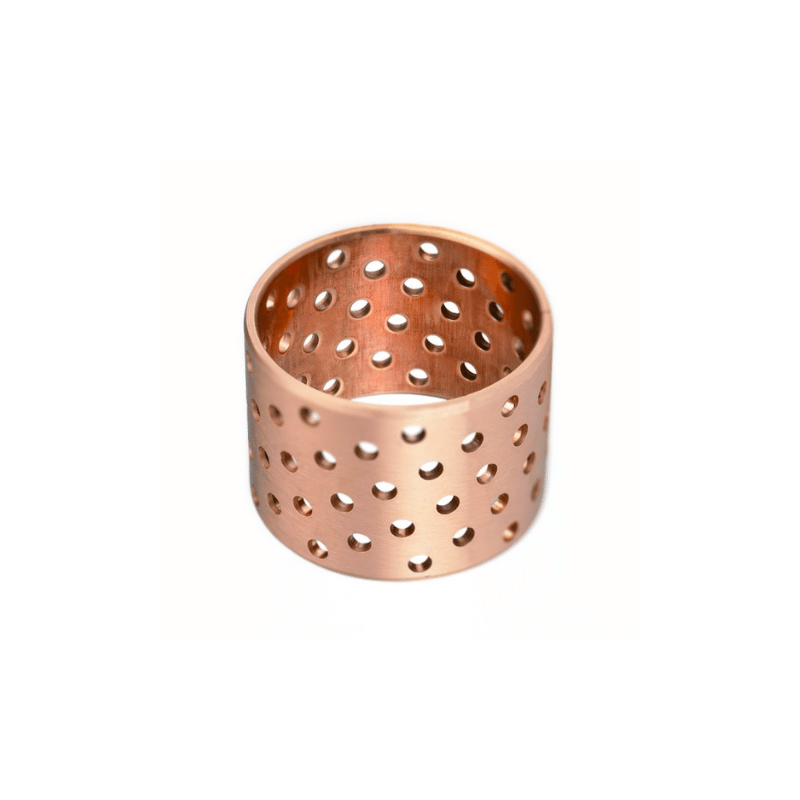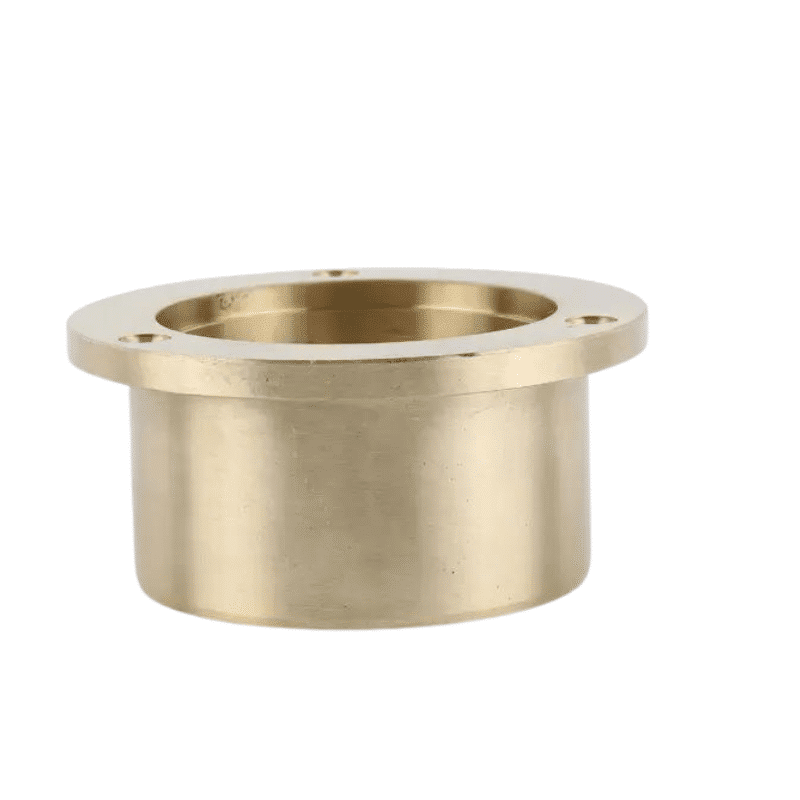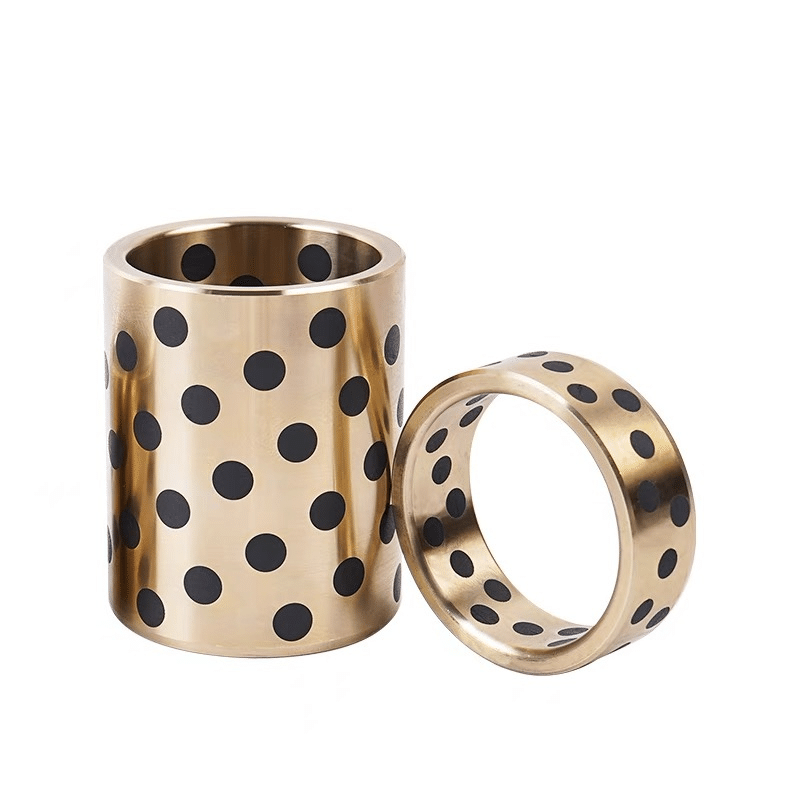Exploring the Marvels of C93700 High Leaded Tin Bronze SAE 64: A Comprehensive Guide
Experience the Strength of Self-lubricating Bearings
Exploring the Versatility of Brass & Brass Alloys: A Comprehensive Guide, sae 64 bronze Bushing
In the world of engineering and manufacturing, precision is paramount. Every component plays a crucial role in the smooth functioning of machinery, and when it comes to durability, reliability, and efficiency, the choice of materials becomes pivotal. Among the array of materials available, C93700 High Leaded Tin Bronze stands out as a remarkable option, particularly in the realm of bearings and bushings. In this guide, we delve into the intricacies of C93700 High Leaded Tin Bronze, focusing on its properties, applications, and the benefits it offers, especially in the form of custom bronze bearings, half bushings, and grease grooves.
Providing Brass, Bronze, and Specialty Copper Alloys, Copper Alloy Machining Services
Understanding C93700 High Leaded Tin Bronze, sae 64 bronze :
C93700, also known as SAE 64 Bronze, 64 metals, is a high-leaded tin bronze alloy renowned for its exceptional machinability, good strength, and excellent wear resistance. Comprising primarily of copper, tin, and lead, with additional elements like zinc and iron, this alloy is meticulously engineered to meet the demanding requirements of various industrial applications. Its composition lends it a unique set of properties that make it an ideal choice for manufacturing bushings, bearings, and other components subjected to heavy loads, high speeds, and harsh operating conditions.
Find Quality SAE 64 Bronze Bushings Here: Discover our range of SAE 64 bronze bushings, ideal for automotive, marine, and industrial applications. Durable & reliable. Shop now!
C93700 (SAE64) Bearing Bronze / C937 Bronze Properties and Advantages:
Machinability: One of the standout features of C93700 bronze is its superb machinability. This property allows for intricate designs and precise machining, facilitating the creation of custom components tailored to specific needs.
Wear Resistance: C93700 bronze exhibits excellent wear resistance, making it suitable for applications where friction and abrasion are prevalent. This characteristic ensures prolonged service life and reduced maintenance requirements, enhancing overall operational efficiency.
Self-Lubricating: The presence of lead in the alloy composition contributes to its self-lubricating properties. This inherent lubricity reduces friction between moving parts, minimizes heat generation, and prevents seizing, thereby improving performance and reliability.
Corrosion Resistance: Copper-based alloys, including C93700 bronze, boast commendable corrosion resistance, ensuring longevity even in challenging environments exposed to moisture, chemicals, and other corrosive elements.
Enhance your machinery’s performance with our premium SAE 64 bronze bushings. Self-lubricating, high wear resistance. Order today!
Applications:
C93700 High Leaded Tin Bronze finds widespread use across various industries, owing to its versatile properties. Some common applications include:
- Bearings and Bushings: C93700 bronze is particularly well-suited for manufacturing bearings and bushings due to its excellent wear resistance and self-lubricating nature. These components are vital for supporting rotating shafts, reducing friction, and maintaining alignment in machinery and equipment.
- Half Bushings: Half bushings, also known as flanged bushings or split bearings, are utilized in applications where disassembly and reassembly are frequent or where space constraints exist. C93700 bronze half bushings offer durability, ease of installation, and reliable performance in demanding operating conditions.
- Grease Grooves: Grease grooves are machined features incorporated into bearings and bushings to facilitate the distribution of lubricants, such as grease or oil, throughout the contact surfaces. C93700 bronze with grease grooves ensures efficient lubrication, minimizing wear and extending the component’s service life.
The chemical composition of C93700 High Leaded Tin Bronze typically consists of the following elements:
- Copper (Cu): 80.0% – 82.0%
- Tin (Sn): 6.0% – 8.0%
- Lead (Pb): 7.0% – 9.0%
- Zinc (Zn): ≤ 1.0%
- Iron (Fe): ≤ 1.0%
- Nickel (Ni): ≤ 1.0%
- Phosphorus (P): ≤ 0.10%
- Sulfur (S): ≤ 0.10%
- Antimony (Sb): ≤ 0.10%
- Silicon (Si): ≤ 0.10%
- Aluminum (Al): ≤ 0.005%
- Others (Each): ≤ 0.05%
- Others (Total): ≤ 0.25%
These percentages may vary slightly depending on the specific manufacturer or supplier. The precise composition is carefully controlled to ensure the desired mechanical properties and performance characteristics of the alloy, such as machinability, wear resistance, and corrosion resistance.
C93700 High Leaded Tin Bronze stands as a stalwart in the realm of engineering materials, revered for its exceptional properties and myriad applications. Whether in the form of custom bronze bearings, half bushings, or grease grooves, this versatile alloy offers unparalleled reliability, longevity, and performance. As industries continue to evolve and demand innovative solutions, C93700 bronze remains a steadfast choice for engineers and manufacturers striving for excellence in their products and processes.
The SAE 64 bronze is equivalent to ASTM B505 C93700 bronze. The SAE (Society of Automotive Engineers) and ASTM (American Society for Testing and Materials) designations both refer to standards that specify the chemical composition, mechanical properties, and other characteristics of materials. In the case of C93700 bronze, it is commonly known as SAE 64 bronze in the automotive industry and designated as ASTM B505 C93700 in materials standards. These designations ensure consistency and facilitate communication among manufacturers, engineers, and other stakeholders.
The chemical composition of SAE 64 bronze, also known as C93700 High Leaded Tin Bronze, typically includes the following elements:
- Copper (Cu): 80.0% – 82.0%
- Tin (Sn): 6.0% – 8.0%
- Lead (Pb): 7.0% – 9.0%
- Zinc (Zn): ≤ 1.0%
- Iron (Fe): ≤ 1.0%
- Nickel (Ni): ≤ 1.0%
- Phosphorus (P): ≤ 0.10%
- Sulfur (S): ≤ 0.10%
- Antimony (Sb): ≤ 0.10%
- Silicon (Si): ≤ 0.10%
- Aluminum (Al): ≤ 0.005%
- Others (Each): ≤ 0.05%
- Others (Total): ≤ 0.25%
These percentages are typical values and may vary slightly depending on the specific manufacturer or supplier. The precise composition is carefully controlled to ensure the desired properties of the alloy, such as machinability, wear resistance, and corrosion resistance.
Explore Other Alloys
Suggested Searches: C86200, C86300, C93200, C95400






